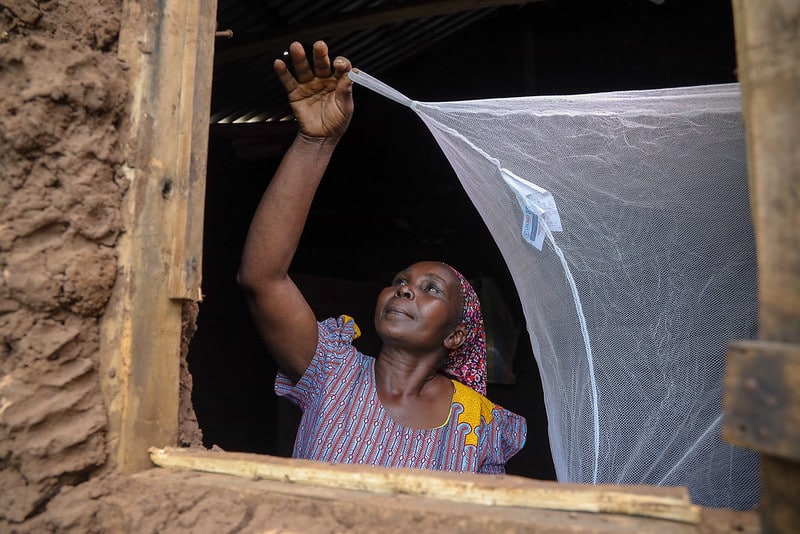For decades, officials in sub-Saharan Africa have been looking for clues as to how to improve malaria outcomes in their countries.
One obstacle, however, was the lack of comprehensive and concrete data on the malaria prevention landscape. For example, the proportion of people sleeping under mosquito nets that protect against malaria is commonly known, but household factors that motivate net use were not.
How could health officials better understand what motivates people to sleep under mosquito nets? How could they make plans to reduce malaria in their countries if they didn’t understand why people behave the way they do?
Prevention and treatment interventions are often designed in the absence of such insights, resulting in activities that fail to fully address household needs and, as a result, the country.
That’s where the Johns Hopkins Center for Communication Programs-led Breakthrough ACTION project came in. Beginning in 2018 in Cote d’Ivoire, with funding from the U.S. President’s Malaria Initiative (PMI), Breakthrough ACTION conducted the Malaria Behavior Survey (MBS), interviewing more than 31,700 people in the first six countries, with six more countries expecting results in the coming months. The MBS is unique in that it goes beyond merely measuring behaviors. This new survey gathers data on the behavioral factors that influence people’s use of malaria prevention and treatment interventions.
While it’s great to have high-quality survey data, Breakthrough ACTION has taken things a step further. Instead of asking officials to comb through lengthy reports to determine how widely behaviors are practiced and what needs to be addressed, the PMI-sponsored project recently launched an interactive, easy-to-use dashboard designed to assist countries to prioritize behaviors and the factors associated with those behaviors, with the ultimate goal of creating behavior change programs that address gaps and prevent some of the estimated 619,000 deaths a year due to malaria.
“This dashboard is like a Swiss Army knife,” said CCP’s Michael Toso, a senior program officer who supports country-level implementation of the MBS survey. “We are fortunate to have a large amount of data that describes why people do what they do. However, there are so many data that it can take time to comb through. That’s why this new visual, interactive dashboard is so important. Now, program planners can pull up exactly what they need to understand, on their phone, in seconds.”
The dashboard shows a selection of the most important data points from the MBS. Decision makers and country officials can access it on a desktop or a mobile phone, given their growing use.
National malaria programs and other partners can use displayed data to develop evidence-based malaria programs and strategies to increase insecticide-treated nets use and care, prevention of malaria in pregnancy, prompt care seeking for fever, adherence to malaria test results, and where applicable, indoor residual spraying acceptance, Toso says.
In some results on the dashboard – including the survey conducted in Cote d’Ivoire in 2018 – the biggest contributor to consistent net use is a feeling of self-efficacy, that is, confidence that given the many constraints of a person’s daily life, that person feels they can actually do something to protect themselves and their family.
The dashboard outlines how behavioral factors like attitudes and social norms vary by gender, age, education, and geographic location and makes suggestions for how to target different groups of people with messages. For those with low self-efficacy, demonstrating how easy or desirable it is to use a net can boost their confidence to use one, and can be done through social and behavior change activities like community theater, testimonials or role playing.
In places where social norms are the main barrier to regular net use, creating campaigns focused on building positive attitudes could work well, such as demonstrating the non-health benefits of nets by focusing on getting a peaceful night’s sleep under a net.
Results can also be used to inform Global Fund to Fight AIDS, Tuberculosis and Malaria concept notes, and in countries that receive funding from the PMI, to inform Malaria Operational Plan SBC priorities. While primarily a formative assessment tool, if implemented every five years, the MBS can be used to capture trends over time.
Whether the drivers of behavior are attitudes, social norms, or any other behavioral factor, the new MBS dashboard is helping program planners quickly and easily visualize their situation and take action.





